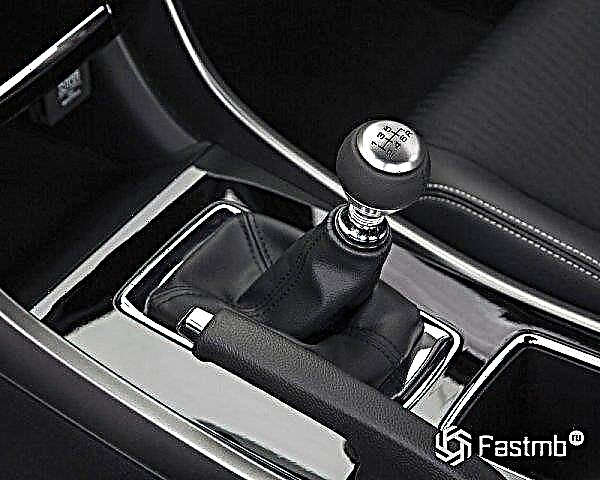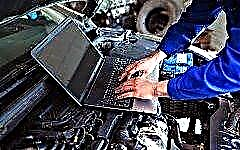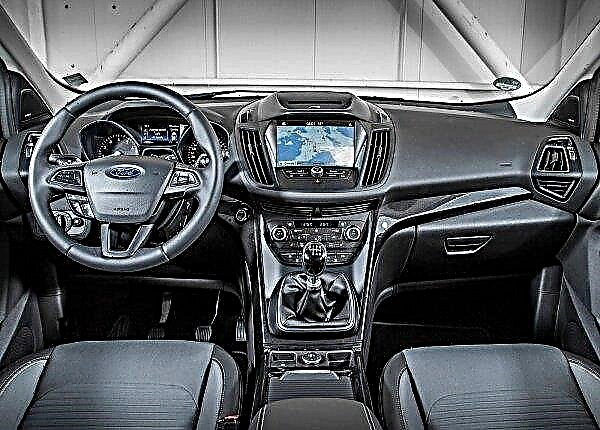

The content of the article:
- Types of seat heating
- Heated seat benefits
- Disadvantages of heated seats
- Safe operation rules
- How to choose quality heating systems
- DIY installation
A car with the option of heated seats has long ceased to be a luxury. Most brands of manufactured vehicles strive to make the complete set of the car so convenient and comfortable that the driver is loyal to this model.
The presence of such seemingly simple functions often tilts the scales in favor of choosing a particular vehicle.
However, there are also so-called non-built-in heaters, which are used by owners of older car models. In this article, we will consider what is the difference between seat heaters, how they work, as well as their pros and cons.
Types of seat heating

The first and most common is the group of built-in seat heaters.... They are installed as an additional option or are part of the vehicle equipment from the manufacturer. They are reliable, waterproof, but their installation is complicated by the need to completely disassemble the landing car seats, and the equipment is quite expensive.
The appearance of the heaters is aesthetic, the device can be equipped with additional options in the form of massage rollers. Control is carried out by buttons and adjustment knobs built into the dashboard.
The second group - non-built-in heaters - is represented by special chair covers... They are inexpensive, easy to install and remove, but poorly protected from moisture, and generally do not differ in reliability in terms of electrical part. Often these covers are not very aesthetic, and due to their connection in the cabin, the bundles of electrical wiring are visible. Such devices are turned on mainly through the cigarette lighter with a separate plug.
Any of these heaters can be equipped with a thermostat for smooth or multi-stage heating level control with automatic shutdown. Also, heaters can be divided according to the type of structural elements that underlie their manufacture:
- Wire heating elements. They are located on the principle of a spiral in a portable electric stove or underfloor heating. They pass under the entire surface of the seat cover: thin, flat, inconspicuous. On top of the wire there is an insulating Teflon layer that is safe from the point of view of electrical heating, one that reduces heat transfer by an order of magnitude.
Such heating elements are inexpensive, but they are fragile and fail quickly.
- Carbon Fiber Heating Elements Is an interlayer of polymer carbon filament. High heat transfer, rapid heating, ductility, flexibility, resistance to wear and tear and tensile stress make their price quite high.
Heated seat benefits

What, in fact, do you need heated pillows? Regardless of the type of heating element and its design, the main goal is to ensure maximum comfort when operating vehicles in low ambient temperatures.
From autumn to late spring, when the vehicle is in the parking lot, the interior of the car cools down. The longer the car is idle, the more difficult it is to quickly warm up the interior. Sitting on a cold chair is at least unpleasant. In addition, it can lead to serious health consequences for both drivers and passengers, regardless of gender and age. Therefore, the main plus is to improve the comfort of the vehicle.
One of the advantages of seat heating is also a certain therapeutic effect, which is indicated for elderly people and people with chronic diseases: arthritis, sciatica, deformation of ligaments, tendons and changes in the connective tissues of bones and vertebrae, intercostal neuralgia.
When landing on an unheated seat in a cold cabin, you can most often get such an unpleasant effect as chilled organs of the reproductive system, colds due to a sharp temperature drop, cystitis, exacerbation of osteochondrosis, prostatitis, and other equally serious diseases of the kidneys, bladder, and the organism as a whole.
However, with all its advantages, this option also has some disadvantages. What is the potential danger of having this function in a vehicle?
Disadvantages of heated seats

For a healthy body, the slightly elevated temperature of the chair is not harmful as such. Despite all the advantages, a constantly running pillow heater can lead to:
- tiredness;
- headache;
- neuralgia;
- pinched intervertebral nerves or sciatic nerve;
- decreased reproductive function;
- colds;
- aggravation of inflammatory processes;
- the growth of benign and malignant formations;
- violation of the temperature balance in the body.
All this is facilitated by a number of factors, a set of conditions and a complex of reasons. Let's take a closer look at how it works.
In order to get at least one of the above diseases, it is necessary to be in a sitting position for at least 4-6 hours daily: in itself, a long stay in this position and a sedentary lifestyle contribute to the development of various neuralgic diseases, pinching, and the onset of fatigue.
The occurrence of infectious diseases, colds and inflammations is due to the fact that the driver and passengers may not be dressed for the season, therefore, a sharp temperature drop causes various diseases. For those who dress appropriately for the weather, there will be no harm.
Headaches and fatigue can occur due to stuffiness, dry air and lack of oxygen, however, to achieve these effects, a significant amount of time must pass from the beginning of heating the passenger compartment and seats.
Reproductive function can also be affected due to a complex of factors: being behind the wheel for more than 5 hours daily, constantly heating the seat, the "greenhouse effect" resulting from wearing poorly breathing, tight, uncomfortable clothing in such conditions, and reduced blood circulation in organs of the small pelvis due to the combination of these conditions. We repeat that for most people using personal transport, this does not pose a danger.
The presence of inflammatory diseases, tumors, benign or malignant formations in itself is a contraindication to exclude any types of effects on the weakened body of high temperatures.
By observing the simple rules for using seat heating, you can avoid most of the unpleasant consequences, even for those who, by the nature of their professional activities, have to be behind the wheel for a longer time.
Safe operation rules

To avoid overheating and hypothermia with equal probability, there are simple measures to achieve the "golden mean". It is especially important to observe them for those drivers who drive more than 5 hours a day continuously. In addition, these rules will increase the life of the equipment and extend its performance.
- Use the option for a short time.It will be optimal to turn on the heating for a short time (up to 10-15 minutes) simultaneously with the warming up of the car engine. After warming up - turn off the function and drive.
- If possible, you should exclude from your wardrobe warm, tight, uncomfortable and synthetic clothing that contributes to the creation of a "greenhouse effect" and associated severe ailments.
- If it is possible to control the heating level, use it at minimum power.
- Moisture should be avoided whenever possible.
- Pay attention to safety precautions: do not smoke in the cabin, insulate the wires, ensure their protection from possible mechanical damage. Do not leave the device switched on unattended. Use only dry cleaning methods for electrically heated chairs.
Let's consider further how to choose high-quality heating systems for a car, if they are not a basic option in a car.
How to choose quality heating systems

Automotive stores today provide a wide range of seat heating systems. Regardless of whether it is imported or domestic manufacturers, you can choose a kit for every taste and wallet - from quite budget covers to elite built-in heating elements not only for the front driver's and passenger seats, but also for the rear landing cushions, which is especially important for motorists with children.
The main criteria for choosing heating systems:
- operational safety;
- quality of material, seams;
- the quality of electrical wiring, switches, adjustment and control mechanisms;
- the speed of warming up;
- heated backrest and seat;
- method of installation and reliability of fasteners;
- aesthetics of appearance.
After the choice of built-in or non-built-in heater is made, it is necessary to install it correctly. For those who do not want to overpay for car service services, there is a simple DIY installation guide.
DIY installation

It is not difficult to mount a set of heaters of the "cover" or "cape" type. In general, the steps are as follows:
- Purchase of a heating system.
- Visual assessment for the health of the electrical part and the external part.
- Installation on a chair, fixing with fasteners.
- Wiring - if possible, protected from mechanical damage.
- Connecting the plug to the cigarette lighter.
If regulators are included, place them for easy access and temperature control.
Complex installation requires special knowledge in the field of electrical and electronics, therefore it is better to entrust the installation of built-in heating systems to specialists. An important plus in this case will be the guarantee for the work performed.
If it is decided to carry out the installation on its own, then the order of work will be as follows:
- Choose and buy a heating system. The kit may include: heating elements, heating buttons, plugs, control unit. The advantage of systems with blocks is the presence of protective relays that prevent short circuits, overheating, multiple control modes, automatic shutdown.
- Next, you need to dismantle the seats and remove them from the passenger compartment.
- Remove seat and back upholstery: some models have removable covers, others need to be cut at the seam.
- The protective layer is removed from the heating element. The heater is carefully glued to the foam rubber of the chair.
- Wires are pulled into a pre-prepared hole.
- The upholstery covers are installed in place, the seat is installed in the salon.
- Control buttons are mounted in a hole prepared in plastic in a chair, torpedo, door or console.
- According to the instructions, the control unit, buttons and electrical circuits are connected.
- The wires are removed.
Installation is complete, you can enjoy the warmth in the cabin!
Conclusion
Usually, for those who are independently engaged in the repair and maintenance of a car, the installation of heating is not difficult. Otherwise, it is better to use the help of competent car service specialists. It is important to remember that safe for health, durable and comfortable use of seat heating elements in the cold season directly depends on correct operation!











